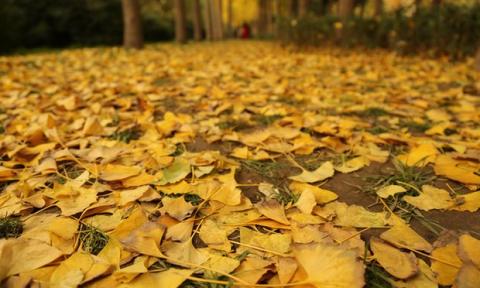
The draft genome of Ginkgo biloba, the sole surviving species of an ancient group of seed plants, has been published.
Ginkgo biloba is a beautiful tree. Its elegant fan-shaped leaves, which turn a vivid yellow in Autumn, are often borrowed by the world of art and design. In South-East Asia, ginkgo has a long association with Buddhist temples and the trees themselves are regarded with reverence. While small wild populations have been identified in mountain groves in South West China, ginkgo has a global distribution, due to its popularity as a cultivated tree. Its tolerance of pollution makes it particularly popular with city planners. Male trees are preferable for this purpose, however (ginkgo is dioecious, with separate male and female trees), because the edible fleshy seeds are notoriously smelly. Ginkgo is also used in traditional medicine, and Ginkgo biloba extract is a widely available dietary supplement.
Ginkgo biloba is the archetypal “living fossil” of the plant world, even if this label sometimes causes more confusion than it solves. Fossils tell us that the gross morphology of its leaves has remained stable for more than 200 million years, although a variety of associated reproductive structures have been recognised. The fossil record also tells us that ginkgoes were widespread, and found in fossil assemblages not too different ecologically from the forests they still live in today. What ancient fossils cannot tell us is very much about how ginkgoes are related to the other major plant groups.

